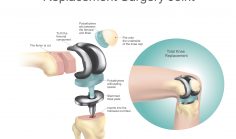Your back is they key structural support for your entire body. Together with your muscles and joints, it allows you to move and bear weight—but it’s a finely balanced structure that can be easily injured if not cared for properly. Understanding the basics of back care can make the difference a healthy back and an aching one.
The back—or spinal column—is comprised of 24 moveable bones called vertebrae. Between each vertebra is a cushion-like pad—called a disc—that absorbs shock. Your vertebrae and discs are supported by muscles and ligaments, which keep your back in proper alignment. A healthy back has three balanced curves—the cervical (neck) curve, thoracic (chest) curve, and the lumbar (lower back) curve. When any part of the system that comprises your back is out of alignment, or experiences disease or injury, then back problems and pain generally follow.
A healthy back is a balanced back—which is to say your cervical, thoracic, and lumbar curves are all properly aligned. So what does “properly aligned” mean? Your back is said to be in proper alignment when your ears, shoulders, and hips are “stacked” in a straight line.
Now that we have a bit of background on what makes for a healthy back, we can better understand the mechanics behind back pain. The majority of backaches are caused by both poor posture and weak supporting muscles. Poor posture places excess stress on the spinal column, which, over time, can lead to sudden acute back pain, as well as chronic back pain. Weak muscles are often responsible for poor posture. This is one of the first places to look to when thinking preventively about back pain—strengthening key muscles can make a big difference for those that are prone to back pain. As well, there are various conditions, such as scoliosis, arthritis, and herniated or ruptured discs that can also cause back pain—many of which can also be helped by the strengthening of back muscles and improvement in posture.











